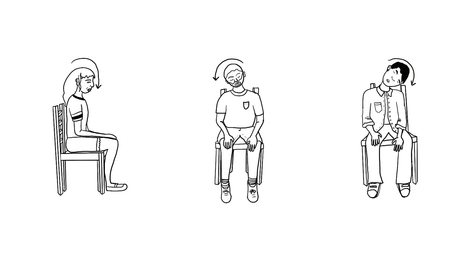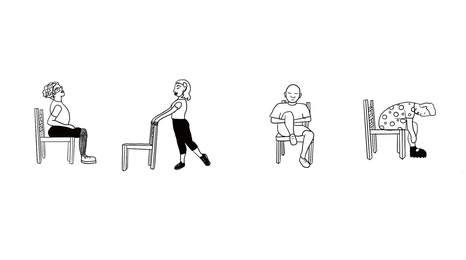English | español
Yoga is for everyone
The practice of yoga is adaptable for all ages and body types. You don’t need to be young, flexible or in good shape to benefit from the practice. Yoga is a complete physical, mental and spiritual discipline that originated in India thousands of years ago. Here in the U.S., we think of the physical postures (asanas) and deep breathing practice (pranayama) as yoga. In fact, there are six more facets or limbs of yoga including meditation (dhyana) that can be learned and practiced to achieve the yogic unity of mind, body and spirit.
Breathing or pranayama
One of the cornerstones of yoga is deep breathing from your diaphragm. A practice that can also be used to relax and de-stress. Try it:
- Sitting tall, feet flat on the ground, place one hand on your abdomen.
- Close your eyes and inhale through your nose then exhale through your mouth.
- The hand on your stomach should move out with every intake of breath.
- If not, you’re chest breathing, which is a more shallow form of breathing that does not offer the same stress reduction.
Postures or asanas
One of the newest aspects of yoga, the physical postures, are used to increase strength, flexibility, balance and concentration. The different postures, include standing, sitting, twisting, inversions and balance poses.
Creating a balanced yoga routine
A balanced yoga routine uses a variety of postures in succession to achieve physical benefits and ready you for meditation or dhyana. A typical routine starts on the floor, moves toward standing, twists, inversions, balances and then back on the floor for a rest, blessing or meditation.
It’s important to listen to your body and not go beyond what you can do safely and comfortably. Chair yoga and gentle yoga are terms used to describe routines that are modified or adapted to suit all abilities.
Chair yoga
Relax and breathe. Sit tall in your chair, hands on stomach and feet flat on the floor. Close your eyes and take a deep breath in through your nose, feel your hands move away from your body, then breathe out through your mouth. Take three deep breaths and focus on relaxing your body.
Head and neck
Using the same deep breathing technique, inhale as you lengthen your neck, exhale as you lower your head. Inhale and lift your head back to neutral. Repeat three times then do the same as you move your head to the right three times and then to the left three times. Always return to the neutral position.
Rotations
Maintain your posture and breathing techniques while performing shoulder, wrist, and ankle rotations at least three times each.
Balance and flexibility
The cobra pose helps improve upper back flexibility, the half locust pose improves balance and lower back flexibility, the leg-to-chest and forward bend poses help improve lower back flexibility. Try each posture three times with each leg and use deep breathing.
Inversion and twisting
Try the shoulder stand pose with legs on chair, and the twist in the chair pose — remember to continue your deep breathing and repeat three times.
Resting pose
Finish your chair routine with a resting pose, focus on deep breathing and relaxation.
Reviewed in 2023






